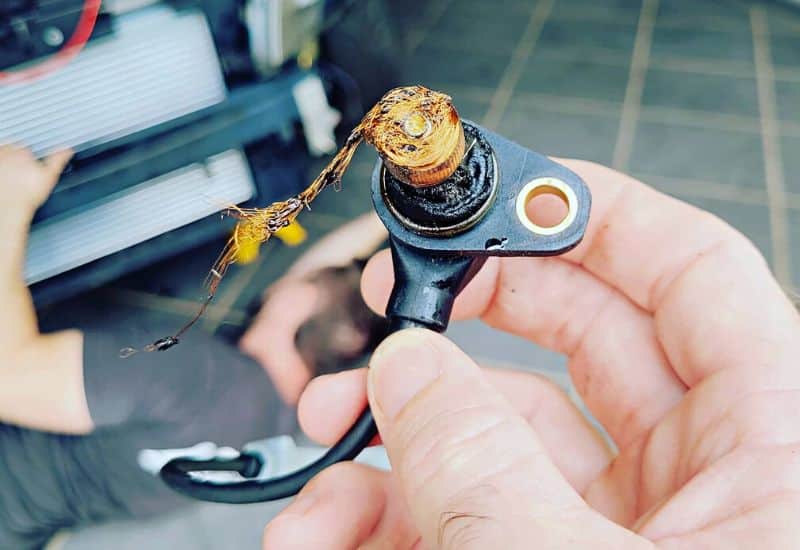
Chances are good that you don’t lay up at night tossing and turning thinking about your car’s crankshaft position sensor (CKP). Yet when it starts to fail, you might just lose a little sleep trying to figure out what’s gone wrong and how much it’s going to cost to replace the bad crankshaft position sensor.
After all, the crank sensor does play a critical role in measuring the rotation speed (RPM) and the precise position of the engine crankshaft and transmits that data to the ECU. When the crankshaft sensor starts to fail or go bad, the ECU is essentially flying blind, which can lead to a wide range of mechanical problems, including the engine’s idling and acceleration behavior.
Symptoms of a faulty crank position sensor include engine hesitation during acceleration, car shaking when idle, and in the worst case, leaving you stranded with a car that won’t even start.
To find out if the positional crankshaft sensor is bad or failing, we’re going to have to explore how it operates, common signs of CKP failure to look for, and what you can do to fix the problem.
What Is a Crankshaft Position Sensor & How It Works
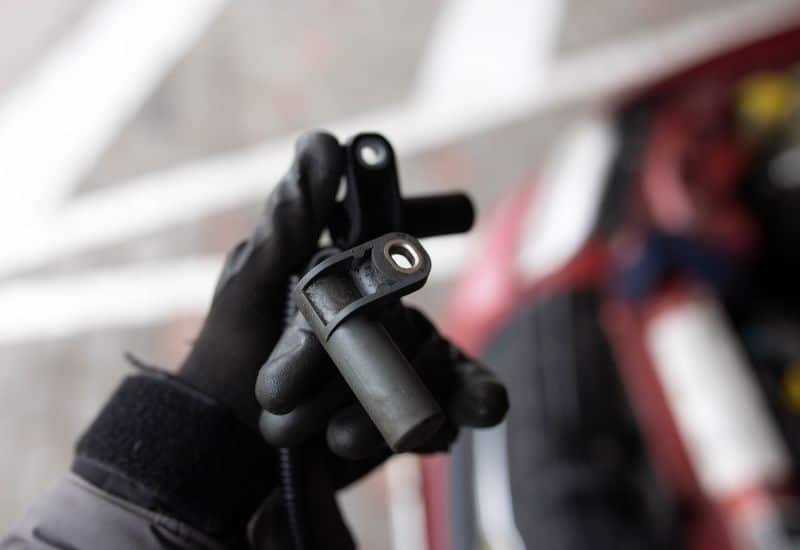
The crankshaft position sensor (CKP) is an electromagnetic device that precisely measures the position of the crankshaft’s teeth and the rotational speed. It instantaneously transmits this data to the car’s ECU via a pulsating voltage signal. Each pulse corresponds to the tooth on the engine’s reluctor ring.
The ECU then uses this data to time the spark and fuel injection in each cylinder precisely. At the same time, the signal from the crankshaft position sensor also monitors if any of the cylinders are misfiring and transmits that data to the ECU. If the crankshaft position sensor fails or goes bad, the fuel injectors won’t work properly, and there won’t be a properly timed spark.
9 Signs of a Bad or Failing Crankshaft Position Sensor You Shouldn’t Ignore
Symptoms of a bad or failing crankshaft position sensor might seem to be intermittent at first. Sometimes, it can be confused with another engine fault. However, the symptoms become more obvious as the crankshaft position sensor continues to fail.
However, a bad or failing crankshaft position sensor will manifest the following:
1. Hard Starting with a Rough Idle
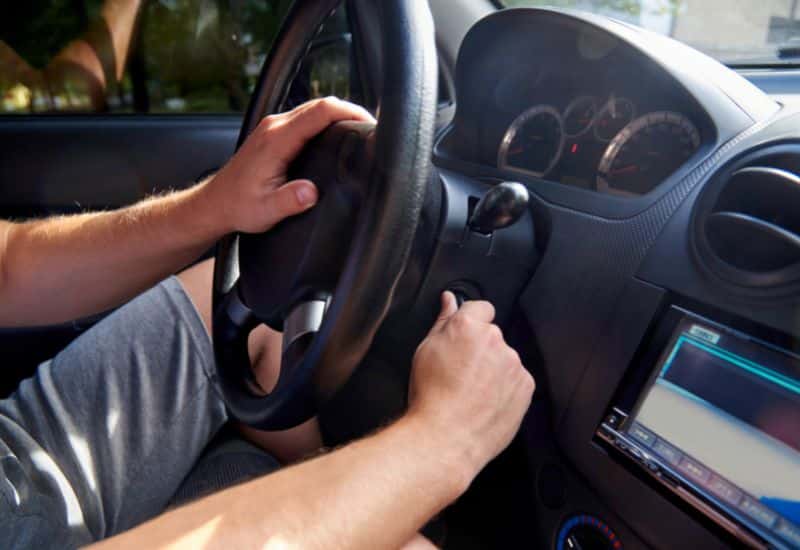
Symptoms of a failing or bad crankshaft position sensor often start out as the engine being hard to start and then running with a rough idle. This is linked to the ECU not having the correct information to precisely synch fuel and spark delivery to the cylinders.
Early on, you might not mentally connect the hard starting and rough idle to a failing crankshaft position sensor. There are a lot of other mechanical faults in an engine that can do the same thing. However, as the idle worsens and the engine labors for longer when starting, you should become increasingly suspicious that the crankshaft position sensor is starting to fail.
2. Intermittent Stalling

Many cars with a failing crankshaft position sensor also experience seemingly random stalling. One minute, the sensor performs normally, but it fails or sends intermittent pulses, which confuses the ECU.
Unfortunately, these stalls often happen when you’re accelerating hard, which can put you in a difficult situation if you merge into traffic at highway speed. This is usually the point where a lot of people take action after an unexpected white-knuckle experience on an on-ramp.
3. Inconsistent Acceleration

When you have a failing crankshaft position sensor, inconsistent acceleration, and intermittent stalling often occur in tandem. You might step on the accelerator, and the car surges, only to suddenly sputter.
If the electric pulses from the failing crankshaft position sensor aren’t transmitted for too long, the internal combustion process in the cylinders stops, and the car stalls. If the pulses are sporadic, the engine surges again, leaving you feeling like it might die at any moment.
4: The Engine Won’t Start
When a crankshaft position sensor goes from failing to bad, it will cause the engine to not start or become severely flooded. As the failing crankshaft position sensor worsens, there is an imbalance between the timing of the fuel delivery and the spark. This type of accidental flooding or timing failure is often the next step after a hard starting, rough idle.
5. Poor Gas Mileage
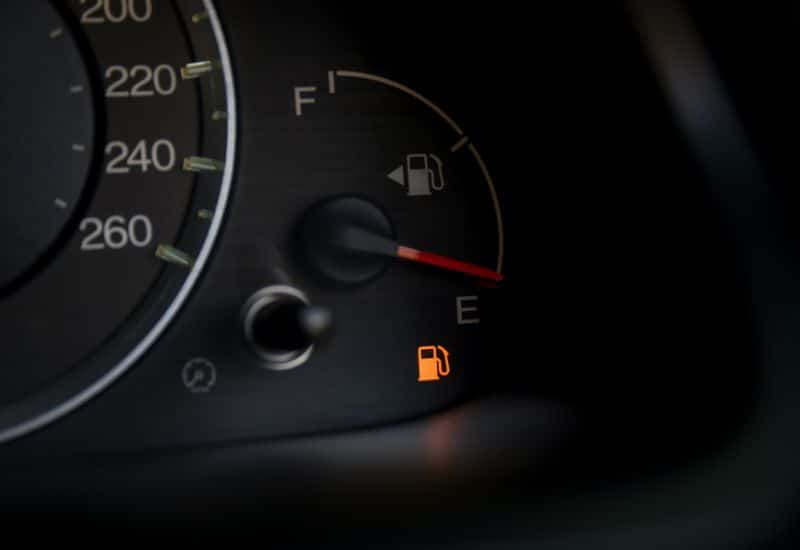
Unburned fuel and poor fuel injector performance caused by a failing crankshaft position sensor can have a cumulative effect on your engine’s fuel consumption, leading to poor gas mileage.
You might not notice a major dip in MPG at first, but the ECU monitors will start to nosedive as the sensor continues to fail the mile-to-the-gallon rating. As unburned fuel enters the exhaust system, it can also cause problems with the catalytic converter, as well as cause foul-smelling exhaust.
6. Engine Misfires

The fuel injector and spark plug performance inconsistencies caused by a failing crankshaft position sensor can also leave unburned fuel in the cylinders, leading to recurring misfires.
This is a symptom of a bad crankshaft position sensor that occurs as stalling and inconsistent acceleration problems worsen, especially when you need to step down hard on the accelerator.
7: Foul Smelling Exhaust
Anytime fuel goes unburned due to a failing crankshaft position sensor, it can travel into the exhaust system, causing foul-smelling exhaust.
The odors might be reminiscent of sulfur or rotten eggs or smell immediately of evaporating gasoline. Usually, these odors happen after a bad crankshaft position sensor causes misfires from poorly timed fuel injectors.
8. Engine Vibrations
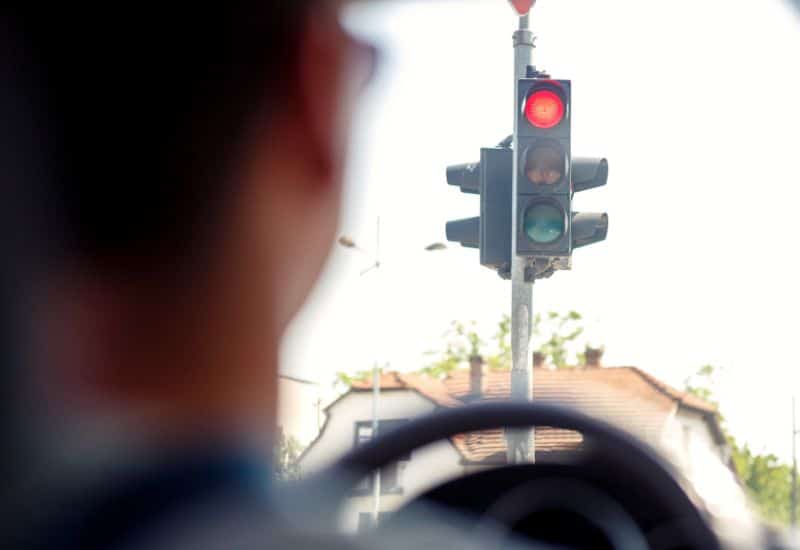
Engine vibrations from a failing crankshaft position sensor can often cause a series of small misfires, often occurring in tandem with a rough idle.
This is more likely to happen when you’re sitting at a red light with the engine running hot. However, you might also notice it when you step down hard to accelerate up to highway speed.
9: Check Engine Light
A failing crankshaft position sensor will trip the check engine light eventually. It’s just a matter of where the automaker set the threshold for a problem. Usually, this starts as a flashing check engine light that happens when the engine misfires or stalls. Sometimes, the light will simply stay on.
The ECU will throw a code that you can read on an OBD II code reader anytime it does this. Usually, you’ll get a P0301 to P0308 code, which indicates the cylinder or cylinders that had a problem. You might even get a P0420 code, which indicates a general problem with the catalytic converter.
Though the codes that you need to pay attention to the most with a bad crankshaft position sensor are P0335 (Crankshaft) or P0340 (Camshaft), this might also include a code P0325 which indicates a Knock Sensor Malfunction.
How to Confirm a Bad Crankshaft Position Sensor
If you’ve been experiencing the common symptoms of a bad crankshaft position sensor, such as rough idle, frequent stalls, misfires, and acceleration issues, then your check engine light has likely come on or flashed a few times.
If you hook the ECU up to a code reader and it throws P0335 (Crankshaft) or P0340 (Camshaft), it is likely the crankshaft position sensor and/or one of the engine knock sensors. It’s not uncommon for both to go bad at the same time.
Crankshaft Position Sensor Location
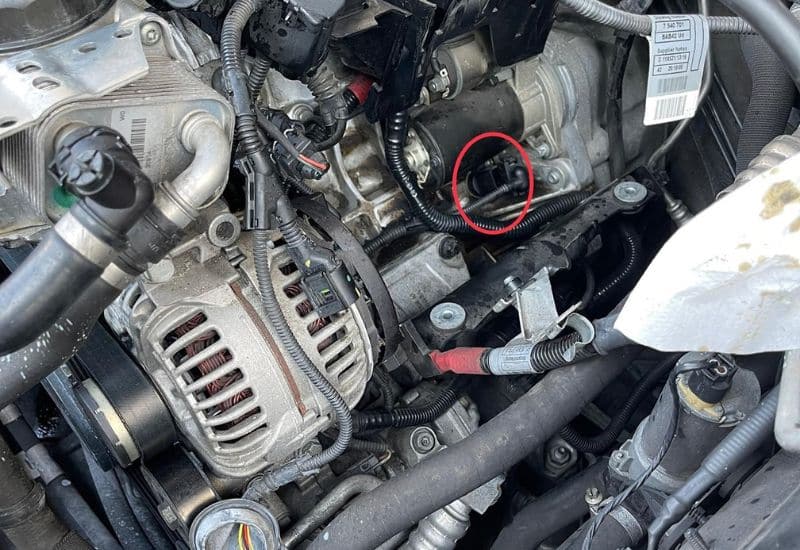
The first step is to locate the failing crankshaft position sensor. In most modern-day vehicles, the crankshaft position sensor is located either inside the timing cover or on the side of the block. If it’s on the side of the block, you’ll see a cylinder that inserts into the block. In some engines, the crankshaft position sensor is mounted near the rear of the engine block near the crankshaft.
Crankshaft Position Sensor Replacement Cost
The cost of a mechanic replacing a crankshaft position sensor ranges from $125 to $300. The part itself usually costs around $50 to $95, depending on the make and model of the vehicle. The rest is the mechanic’s labor time.
If you have slightly above-average auto mechanic skills and a good toolset, you might be able to save yourself some money on the cost of replacing the crankshaft position sensor by doing it yourself. Though if you feel it’s outside your depth, there’s no shame in having a professional mechanic handle the repair.
How to Replace Your Crankshaft Position Sensor
You can replace your own crankshaft position sensor to save yourself $100 or more on the labor cost of having a mechanic do it. This sort of thing requires a modest amount of mechanical skill and a somewhat extensive automotive tool kit.
Once you’ve found it, you can replace your failing crankshaft position sensor via the following steps.
If the car seems to operate normally, you can take it out for a 15 to 20-minute test drive. Ideally, you want to tool around town roads and residential streets to make sure there aren’t any stalling, misfiring, or surging acceleration issues. Then, you can take it out to the highway to see how it handles accelerating, like merging and passing at high speed.
Frequently Asked Questions
What causes a crankshaft position sensor to fail?
Time and excess wear and tear are the primary reasons why crankshaft position sensors start to fail. Though failure can be accelerated if your car has a history of running hot, as the sensor is exposed to much of the heat that emanates from the engine block.
Can you drive with a bad crankshaft position sensor?
You might be able to drive with a bad crankshaft position sensor if it has just started to fail. Rough idle, poor MPG and hard starts might be a pain, but they aren’t going to leave you stranded.
When the acceleration becomes inconsistent, the engine starts stalling at random, or you experience misfires, you risk serious engine damage and safety problems that make it a bad idea to drive with a failing crankshaft position sensor.
How long do crankshaft sensors last?
While automakers don’t issue a specific recommendation for when the crankshaft position sensor should be replaced, most have an average lifespan of right around 100,000 miles. This is also where you should give your car a high mileage tune-up. So, don’t be surprised if your mechanic recommends it as part of the process.
Can a crankshaft position sensor be cleaned?
If you inspect your crankshaft position sensor and find it’s caked with grease or carbon deposits from a recent mechanical problem, such as a blown head gasket, you might be able to clean it. This is as simple as removing, wiping, and debriding it with a dry cleaner spray.
Most of the time, a crankshaft position sensor fails due to time and heat exposure, altering the electromagnetic performance of the sensor. So, even if you do clean it, you shouldn’t expect it to be an instant fix. The crankshaft position sensor might fail regardless of how clean or dirty it is.
Conclusion
The early symptoms of a failing crankshaft position sensor, such as a hard idle, poor MPG, and hard starting, can mask themselves as a lot of other engine problems. At this point, the car is still safely drivable.
Though a truly bad crankshaft position sensor that causes misfires, inconsistent acceleration, and random stalling needs to be parked to prevent further engine damage. Not to mention keeping you from getting stranded or stuck in a dangerous driving scenario.
You can usually confirm a bad crankshaft position sensor by the symptoms and a check engine light that throws a code P0335 or P0340. You might simply have a dirty crankshaft position sensor if you’ve recently suffered a problem like a blown head gasket or cracked cylinder head that released oil or other residues into the engine bay. Cleaning it by removing it and wiping it down with a dry cleaning spray might restore normal operation.
However, if your car is nearing 100,000 miles, then chances are good the electromagnetic circuit of the crankshaft position sensor has gone bad. This will require a total replacement, which should cost you between $150 to $300 if you take it to a mechanic.

Written By
Jason Farrell
Jason Farrell is a certified master technician, the editor of Mechanic’s Diary in Pittsburgh, Pennsylvania. He is ASE (Automotive Service Excellence) certified and earned a Bachelor’s Degree in Automotive Technology from Pittsburg State University. With nearly 18 prior years of experience in the automotive field, he has extensive knowledge about Domestic, European, and other foreign makes and models of cars and light trucks. Jason’s experience working as a technician and service manager at dealerships, gave him the experience and know-how of most aspects of inspection, diagnosis, and repair from engine and drivability to electrical, HVAC, brakes, steering and suspension and everything in between.

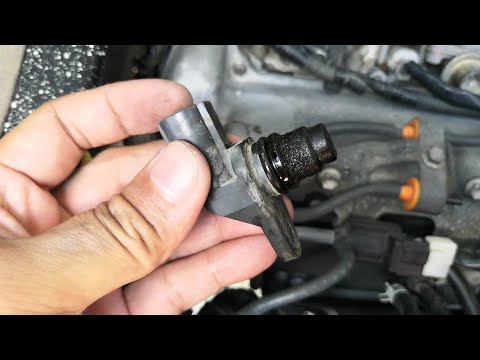
Thank you. The car has a check engine light indicating a problem with the crankshaft. The car won’t start now. I now know what is happening and I hope to get it fixed.